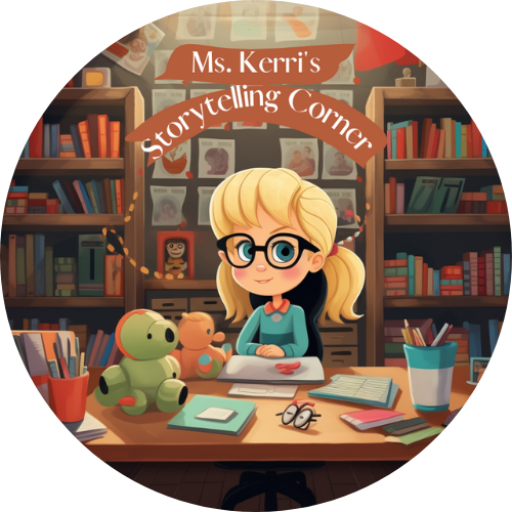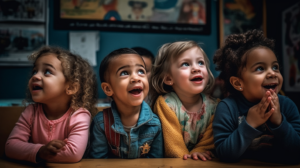What Types of Activities are Recommended For Early Childhood?
Engaging in various activities during early childhood is crucial for a child’s development. From physical movement to imaginative play, there are numerous recommended activities that can help children learn and grow. In this article, we will explore different types of activities that are beneficial for early childhood.
Key Takeaways
- Physical activities like dance parties and obstacle courses promote gross motor skills development.
- Messy play activities such as finger painting and sensory bins enhance sensory exploration and creativity.
- Imaginative play like pretend play and storytelling adventures fosters cognitive development and creativity.
- Encouraging children to engage in different types of activities helps in overall development and learning.
- Parental involvement and encouragement play a significant role in promoting a child’s participation in recommended activities.
Let’s Get Moving!

Dance Parties
Shake it out and get groovy with your little ones! Dance parties are not just a blast; they’re a fabulous way to get those tiny feet moving and hearts pumping. Crank up the tunes and let the rhythm take over. It’s all about fun movements, giggles, and maybe even a little bit of fancy footwork.
- Start with their favorite songs
- Encourage free expression
- Take turns showing off dance moves
Remember, there’s no right or wrong way to boogie – the sillier, the better!
As the music plays, watch as your child’s imagination takes flight. Perhaps they’re a swashbuckling pirate today or maybe they’re channeling their inner Camila the Star from that DIY storybook costume they adore. It’s a wonderful opportunity for family bonding and watching those creative juices flow.
Obstacle Courses
Turn your living room into a jungle gym with a homemade obstacle course. It’s a blast for the little ones and a sneaky way to work on those fine motor skills. Start with cushions for hopping, add a tunnel for crawling, and don’t forget a zigzag of yarn for some laser-beam action!
- Hop on cushions
- Crawl through a tunnel
- Zigzag through yarn lasers
Encourage your tiny adventurers to beat their best time, fostering a love for healthy competition and a sense of accomplishment.
Remember, the goal isn’t just to tire them out (although that’s a fabulous side effect). It’s about teaching early math concepts like counting jumps, measuring distances, and understanding sequences. Plus, they’re socializing with every giggle and cheer!
Silly Walks
Who says walking has to be mundane? Turn a stroll into a giggle-fest with Silly Walks! It’s not just about the laughs; there’s a method to the madness. Purposely walking silly can be a sneaky form of exercise, tweaking the nervous system and nudging us back to a normal gait pattern. The dynamic motion involved in exaggerated strides and goofy gaits can be a full-body workout in disguise.
Encourage your little ones to strut their stuff in the most ridiculous ways they can imagine. From high knees to waddling like a penguin, every silly step is a leap in physical development.

Here’s how to get the silliness started:
- Challenge the kids to mimic different animals or characters.
- Turn it into a game where everyone adds a new silly element to their walk each turn.
- Have a parade around the house or garden, celebrating the silliest of walks.
Remember, the sillier, the better. It’s all about having fun and letting those little legs learn through play!
Messy Fun Time!
Finger Painting
Unleash the colors of creativity with a splash and a giggle! Finger painting is not just a messy affair; it’s a tactile wonderland for tiny hands. Dive into the sensory experience and watch as your little ones mix colors with the enthusiasm of a mad scientist at their first experiment.
- Squeeze out a rainbow of paint colors
- Cover surfaces with paper (or go wild on a plastic tablecloth!)
- Let those little fingers dance across the canvas
Remember, it’s not about the masterpiece they create; it’s the squishy, squashy journey along the way. And who knows? You might just discover the next pint-sized Picasso!
Embrace the chaos! Every smudge, every smear is a story of discovery. Let them explore, let them learn, let them play. After all, a little soap and water will bring those hands back to their pre-art adventure state.
Mud Pies
Dive into the squishy, squelchy world of mud pies, where little hands shape and smush to their heart’s content. It’s a rite of passage for every child to feel the cool, damp earth between their fingers, crafting culinary masterpieces only limited by their imagination. Let them explore textures and temperatures as they plop mud patties onto plates, garnishing with leaves, twigs, or whatever treasures they find.
- Gather your ingredients: dirt, water, and a pinch of creativity.
- Mix to the consistency of childhood delight.
- Shape, decorate, and serve up on a platter of pure joy.
Embrace the mess! It’s not just about getting dirty; it’s about discovery and sensory play. The taste of the sweet mud, gummy worms, and udon noodles can be a delightful surprise in an edible version of this classic activity.
Remember, it’s not about the end product but the squishy journey there. Encourage your little chefs to experiment with different ‘recipes’ and watch as their fine motor skills and coordination improve with every pat and poke. And who knows? Today’s mud pie maestro could be tomorrow’s culinary genius!

Sensory Bins
Dive into a world of textures and colors with sensory bins! These tactile treasure troves are a feast for little fingers, sparking curiosity and fine motor skill development. Watch in awe as your tot explores, scoops, and sorts their way through a variety of materials.
- Rice, beans, or water beads
- Shiny baubles, pompoms, or smooth pebbles
- Tools for digging, pouring, and discovering
Create themed bins for an extra twist: a jungle with green rice and toy animals, or an arctic chill with ice cubes and polar bears. It’s a hands-on party where mess meets learning, and every scoop is a new adventure!
Embrace the chaos! Each spill and scatter is a chance to learn about cleaning up and taking care of our playthings.
Imagination Station
Pretend Play
Unleash the imagination! Pretend play isn’t just a blast—it’s a critical part of early childhood development. Watch as your little ones transform a cardboard box into a spaceship or a sofa cushion into a wild stallion. The possibilities are endless, and so is the fun!
- Dress up as pirates and search for hidden treasure.
- Turn the living room into a castle and fend off dragons.
- Host a tea party for stuffed animals and invisible guests.
Encourage your kids to lead the way in their fantastical journeys. Their creativity might just surprise you!
Remember, there’s no script in the world of pretend. Every giggle and plot twist is a step towards building social skills, language, and emotional understanding. So, let the living room antics commence—your little actors are ready for their debut!
Storytelling Adventures
Unleash the power of your little one’s imagination with epic storytelling adventures! It’s not just about reading from a book; it’s about creating a whole new world where they are the heroes, the villains, or even the magical creatures. Let their creativity soar as they weave intricate tales from the threads of their boundless imaginations.
- Start with a spark: a character, a setting, or a problem to solve.
- Build the suspense with unexpected twists and turns.
- Encourage expressive voices and dramatic gestures to bring the story to life.
Remember, there’s no script to follow. The sillier the story, the louder the giggles. Embrace the nonsensical and watch as your child’s confidence in storytelling blossoms.
Whether it’s a high-stakes space adventure or a whimsical journey through enchanted forests, storytelling is a fantastic way to develop language skills, emotional intelligence, and the ability to think on one’s feet. So grab some props, huddle in a fort made of blankets, and let the adventure begin!
Dress-Up Time
Step into a world where a cardboard box transforms into a rocket, and a bath towel becomes a superhero cape. Dress-Up Time is not just about donning different outfits; it’s a gateway to imagination and endless possibilities. Kids dive into roles that stretch their creativity and social skills, all while having a blast.
- Whip up a fancy ‘restaurant’ with homemade menus
- Turn a rainy afternoon into a castle siege with pillow forts and paper crowns
- Create a makeshift stage for a fashion show with costume jewelry and hand-me-downs
Embrace the chaos! A living room littered with costumes and props is a sign of a day well spent in play and learning.
Remember, the goal is to let their fantasies run wild. It’s not about the perfect princess dress or the most realistic astronaut helmet. It’s about the joy of pretending, the learning that comes from doing, and the memories that stick long after the costumes are back in the box.
Frequently Asked Questions
What are the benefits of dance parties for early childhood development?
Dance parties help improve coordination, rhythm, and social skills in young children.
How can obstacle courses benefit early childhood development?
Obstacle courses promote physical activity, problem-solving skills, and coordination in young children.
Why is messy play important for early childhood development?
Messy play encourages sensory exploration, creativity, and fine motor skills in young children.
What skills can children develop through finger painting?
Finger painting enhances creativity, hand-eye coordination, and sensory experiences in young children.
Why is pretend play essential for early childhood development?
Pretend play fosters imagination, language development, and social skills in young children.
How does storytelling adventures benefit early childhood development?
Storytelling adventures promote language skills, creativity, and cognitive development in young children.


Ms. Kerri’s Corner provides a exciting virtual space for preschool learning. Through a variety of engaging activities, she exposes young minds to early math, literacy, science and social-emotional skills in a developmentally appropriate way. Centers for blocks, art, books and music allow children to explore hands-on learning at their own pace. Guided lessons subtly introduce number sense, letter sounds and narrative thinking. Careful observation gives insight into each child’s progress across domains. Viewers are also invited to participate, reinforcing that their ideas are valued. By making learning fun yet purposeful, Ms. Kerri lays the groundwork for future academic success while fostering creativity and imagination. Her program offers preschoolers valuable screen-based learning experiences.




